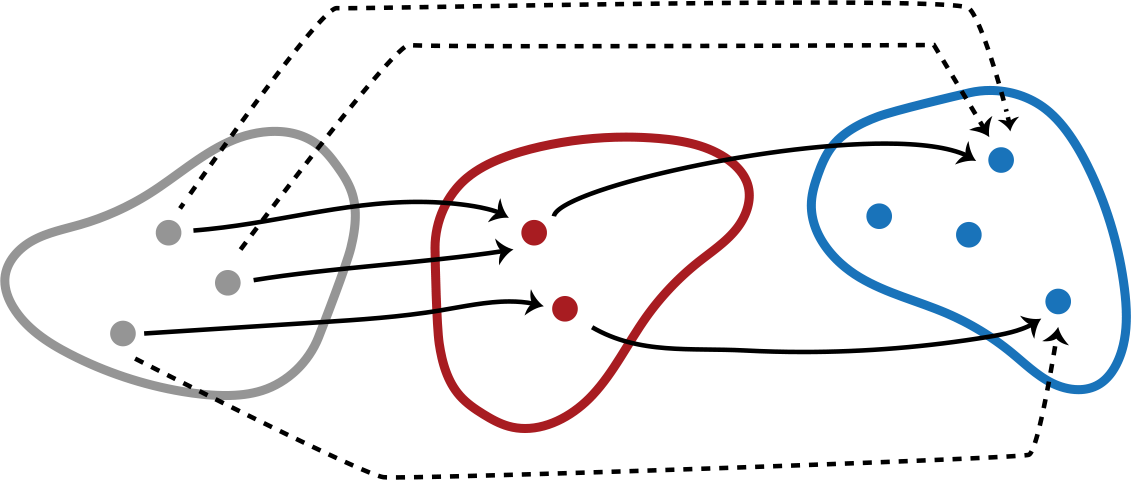3.5: Composición de las funciones
- Page ID
- 103736
Vimos en la sección 3.4 que la inversa\(f^{-1}\) de una biyección\(f\) es en sí misma una función. Otra operación sobre funciones es la composición: podemos definir una nueva función componiendo dos funciones,\(f\) y\(g\), es decir, aplicando primero\(f\) y luego\(g\). Por supuesto, esto solo es posible si los rangos y dominios coinciden, es decir, el rango de\(f\) debe ser un subconjunto del dominio de\(g\). Esta operación en funciones es el análogo de la operación del producto relativo sobre las relaciones de la sección 2.7.
Un diagrama podría ayudar a explicar la idea de composición. En la Figura\(\PageIndex{1}\), se representan dos funciones\(f \colon A \to B\) y\(g \colon B \to C\) y su composición\((\comp{f}{g})\). La función\((\comp{f}{g}) \colon A \to C\) empareja cada elemento de\(A\) con un elemento de\(C\). Especificamos con qué elemento de\(C\) un elemento\(A\) se empareja de la siguiente manera: dada una entrada\(x \in A\), primero aplicar la función\(f\) a\(x\), que dará salida a algunos\(f(x) = y \in B\), luego aplicaremos el función\(g\) a\(y\), que dará salida a algunos\(g(f(x)) = g(y) = z \in C\).

Definición\(\PageIndex{1}\): Composition
Dejar\(f\colon A \to B\) y\(g\colon B \to C\) ser funciones. La composición de\(f\) con\(g\) es\(\comp{f}{g} \colon A \to C\), dónde\((\comp{f}{g})(x) = g(f(x))\).
Ejemplo\(\PageIndex{1}\)
Considerar las funciones\(f(x) = x + 1\), y\(g(x) = 2x\). Ya que\((\comp{f}{g})(x) = g(f(x))\), para cada entrada primero\(x\) debes tomar su sucesor, luego multiplicar el resultado por dos. Por lo que su composición está dada por\((\comp{f}{g})(x) = 2(x+1)\).
Problema\(\PageIndex{1}\)
Demostrar que si\(f \colon A \to B\) y\(g \colon B \to C\) son ambos inyectables, entonces\(\comp{f}{g}\colon A \to C\) es inyectivo.
Problema\(\PageIndex{2}\)
Demostrar que si\(f \colon A \to B\) y\(g \colon B \to C\) son ambos suryectivos, entonces\(\comp{f}{g}\colon A \to C\) es suryectiva.
Problema\(\PageIndex{3}\)
Supongamos\(f \colon A \to B\) y\(g \colon B \to C\). Mostrar que la gráfica de\(\comp{f}{g}\) es\(R_f \mid R_g\).


